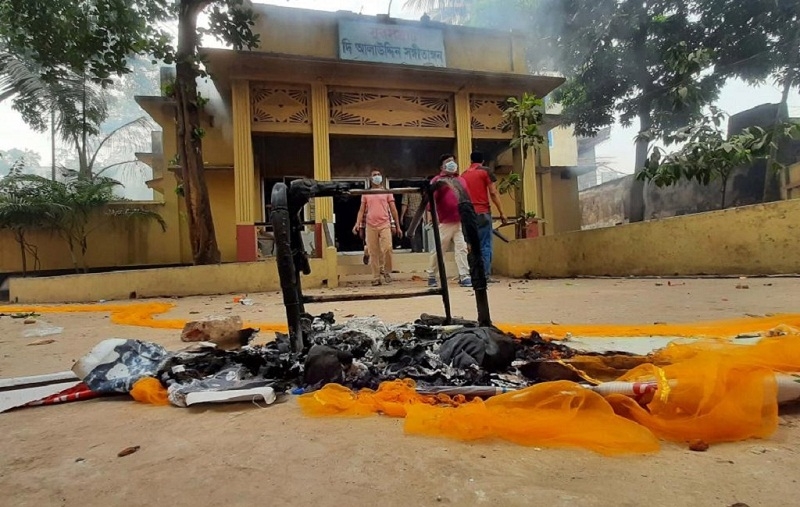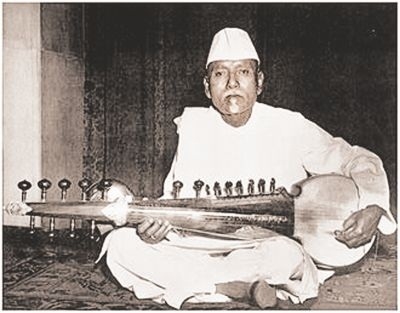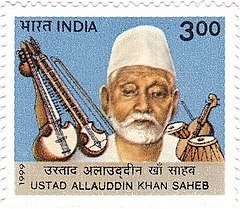A Cultural Tragedy in the Indian Subcontinent

The remains tell the story of attack on Ustad Allauddin Khan Music Academy
The Hefajat has been protesting over three days, March 25 to 27, against the visit of our Prime Minister Narendra Modi to Bangladesh, whereas Modi had been invited by the Bangladesh PM Sheikh Hasina for the Golden Jubilee celebration of Independence of Bangladesh and birth centenary celebration of Bangabandhu Sheikh Mujibur Rahman.
The Hefajat is not the only one protesting. The student wing of Bangladesh Nationalist Party (BNP) too has organized protests. However, the Hefajat’s protests in various towns have been hysteric and violent, leading to substantial loss of lives and property. The attack on a non-political institution, such as the Ustad Alauddin Khan Music academy of Brahmanbaria which has nothing to do with the Modi visit, acquires significance for a different thing altogether. It is the tendency of negation and destruction of culture, persisting over centuries.
 The academy along with its priceless museum of musical instruments and memorabilia has been completely destroyed. The Academy perhaps can be rebuilt, but the museum cannot be. Certain items are destroyed forever.
The academy along with its priceless museum of musical instruments and memorabilia has been completely destroyed. The Academy perhaps can be rebuilt, but the museum cannot be. Certain items are destroyed forever.
It is a sad day for all music lovers. Alauddin Khan, the patriarch musician of a gharana of Indian Classical music, if I remember correctly, was from Brahmanbaria or its hinterland. He was never liked by Islamic hardliners for his syncretic religious attitude toward Hinduism, although he was a strict Namaazi, who always offered Namaaz at five proper times every day. The government of India in 1999 had issued a commemoration stamp in his memory.
Alauddin’s son Ali Akbar Khan was once in a debate through newspaper articles, in the Times of India, with another Sarod Maestro Amjad Ali Khan Bangash. Bangash claimed Sarod had descended from an Afghan instrument called Rabab. Ali Akbar countered with a photograph of a statue playing an instrument called Swaroday. The instrument looked remarkably similar to the present Sarod, apart from the obvious linguistic resemblance.
 Incidentally, the statue is from the North West Frontier Province of Pakistan, a sample of Gandhara art from King Kanishka’s times, preserved in an Indian museum. It seems more likely that Rabab descended from the instrument Swaroday; whereas Swaroday is a Sanskrit conjoined word (Swara +Uday).Thankfully, there was no further rebuttal from Bangash.
Incidentally, the statue is from the North West Frontier Province of Pakistan, a sample of Gandhara art from King Kanishka’s times, preserved in an Indian museum. It seems more likely that Rabab descended from the instrument Swaroday; whereas Swaroday is a Sanskrit conjoined word (Swara +Uday).Thankfully, there was no further rebuttal from Bangash.Just like a tiny drop of dew that can reflect the endless sky, this seemingly insignificant debate reflects the enormous tragedy that has been unfolding in the Indian subcontinent, over the last 1100 years. The end of this tragedy is still not in sight. God alone knows how many lives and generations it would consume.